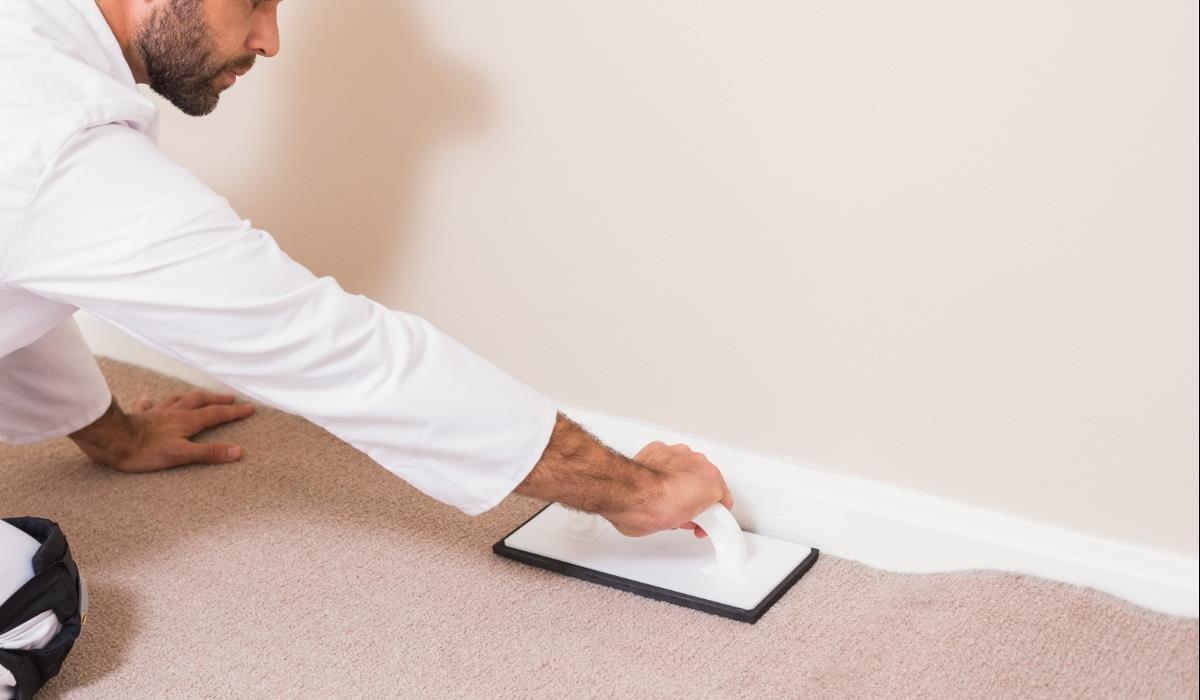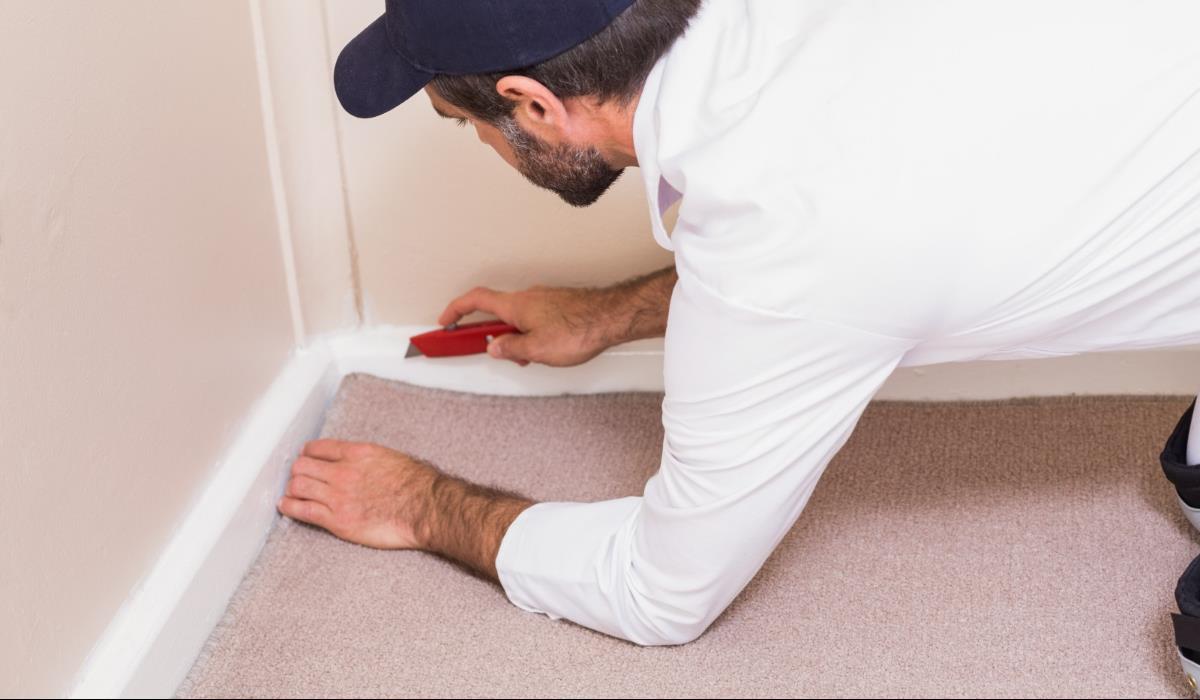Stretching carpet fragments at home on your own? It takes some strength, but specialized tools do most of the work. One of the great advantages of carpet is that its surface is completely smooth and wrinkle-free. Unfortunately, leveling it is a process that requires time, skills and specialized tools.
The two main tools are the aptly named mechanical stretcher and knee kicker. Both have flat aluminum heads with rows of adjustable steel tines angled forward to better bite into the carpet.
Knee keeker
The knee kicker is about 50 cm long. It has a square serrated head and a knee pad on the opposite end.
Mechanical stretcher
The mechanical extender has a larger rectangular head that is connected by a spring-loaded lever to a series of telescopic tubes. Depending on the model, they can extend up to 12 m. This allows the stretcher to rest against the opposite wall.
Stretching the carpet – steps

When installing a new carpet, the first thing to do is to nail a skirting board around the perimeter of the room. These slats go into the carpet and hold it in place. Install an underlay mat between them, covering the entire floor. Starting at one corner, press the tensioner head firmly into the carpet a few inches from the end bar. Maintain pressure and press the edge of the carpet onto the batten. Make sure you leave a spare rug against the wall, which you will later cut off and place the skirting board there.
Repeat these steps along the same wall until the rug is taut. Then activate the mechanism by pulling the lever, which will move the carpet towards the other wall. Be careful with the adjustable lever tension – too much force can damage the carpet, too little will leave slack. Once the rug is stretched towards the other wall, use the kicker to attach the rug to the next perpendicular wall. Then stretch it to the last wall with a mechanical stretcher.

Using one hand, press the rug down to where the skirting board meets the floor. Then cut off the excess carpet with a knife. Instead of a knife, a specialist tool can be used to get clean cuts at the skirting board. This is where a stair tool that has a heavy, wide steel blade can come in handy. Installers use stair tools to drive the cut carpet into the gap between the skirting board and baseboard.



